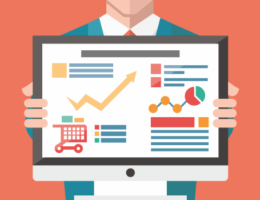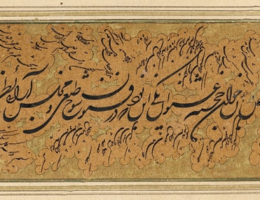IRAN ART EXHIBITION: WHY OUT-OF-HOME-ADVERTISING IS IMPORTANT FOR YOUR COMPANY?
Tech companies like Facebook and Google are leading the way in the world of online advertising. Yet when they want to spread the word about their newest product or feature, they turn to out-of-home advertising, buying billboard ads around the world.
They’re not alone. In mid-2018, Reddit co-founder Alexis O’Hanian announced a substantial investment in a digital billboard booking company called AdQuick. Around the same time, it was announced that Netflix had purchased assets from a prominent billboard company in Los Angeles.
The reason is simple: For all the strengths of online ads, when you want a message to get noticed, you go with out-of-home.
What is out-of-home advertising?
Out-of-home advertising (OOH), also called OOH media, is any visual advertising media found outside of the home. This can include billboards, indoor and outdoor signs, ads on street furniture like bus shelters or benches, in transit areas like airports or train stations, and place-based ad media like you might see at a stadium or in the cinema. These various OOH media formats account for thousands of locations and millions of screens around the world.
OOH is an expansive category, and today represents spending of about $29 billion across key markets around the world. Some of the world’s most important advertisers, including McDonalds, Apple, Amazon, HBO, and Coca-Cola, all make regular and extensive use of various OOH formats in their campaigns.
Why media buyers love OOH advertising
Online advertising can be a little frustrating for media buyers. Ad blockers are in widespread use, and those users who don’t use ad blockers are so bombarded with advertising that it’s difficult to stand out. If an ad’s not above the fold on a popular site, its odds of being seen are not the greatest.
These aren’t worries with out-of-home. Outdoor advertising signage formats like billboards, digital screens, and the rest of the out-of-home family are unskippable. They’re also unblockable, short of holding a hand up in front of your eyes. There’s no fold to be lost beneath and no shortage of visibility. In other words, they’re the ideal vehicle for the big, colourful messages that brands are trying to get out.
IRAN ART EXHIBITION: Media buyers who have made out-of-home a part of their multichannel campaigns have found that doing so provides an important boost to their other channels, too. Research from Ocean NeuroScience found that “consumers are 48% more likely to click on a mobile ad after being exposed to the same ad on an out-of-home ad first.” Similarly, Nielsen and the OAAA found that 46% of surveyed adults had conducted an online search after first seeing the object of their search in an OOH ad. Similar results were also seen with leading social networks.

Today, OOH is enjoying significant upwards momentum, with savvy marketers devoting more of their budgets to OOH media. Of traditional media categories, it is the only one currently growing, at just over 2% in 2018. The industry as a whole is expected to reach about $33 billion in sales by 2021.
Why is out-of-home blowing up now?
With out-of-home one of the oldest and most enduring methods of advertising, it might seem a little strange that it’s becoming more valuable and important today. What accounts for the ongoing OOH renaissance?
IRAN ART EXHIBITION: There’s one main driver: out-of-home is going digital. The new capabilities and greater effectiveness of this industry refresh is driving nearly all of the growth in the space. Digital out-of-home media (DOOH) offers brighter colours, movement, and a lot more convenience. Where replacing a physical media is a time-consuming, often labour-intensive process, digital out-of-home can load many different ads – or even multiple images for a single ad – onto a system at once. It can then cycle through them at whatever frequency the owner likes.
Media buyers are quickly lining up to get in on the action. DOOH is growing at 16% year on year, lifting the entire OOH category as a result. Static out-of-home, meanwhile, has been more or less flat the past few years.
Note that it’s not just static OOH that is getting replaced and overtaken by DOOH. Privacy concerns and regulations are driving consumers and media buyers away from the online spaces that have been the dominant force in global advertising of late. Because data used in the out-of-home space is anonymized, digital out-of-home is being used as a friendlier, safer alternative for reaching target audiences with impressive, exciting visual ads. In a survey published by Marketing Sherpa in 2017, consumers rated outdoor advertising as more trustworthy than all digital advertising formats.
What’s next for the industry?
As the world of OOH embraces digitization, new models for transacting media are becoming more popular within the industry. Today, programmatic digital out-of-home, which automates ad transactions and delivery similar to most online advertising, is becoming more common. This means that OOH advertising is, at last, being integrated into the demand-side platforms used by digital marketers around the world. It could mean even more growth for DOOH is not far off.
IRAN ART EXHIBITION: More common today, but expected to be more fully leveraged in the near future, are dynamic and interactive content delivery. With dynamic content, external data like the weather, traffic, sports, and virtually anything else can be set as a trigger for content. When the conditions are met, selected content can be played on an out-of-home screen. It’s a neat touch that brings even greater impact to the world of DOOH advertising. Interactive content, of course, allows user input to manipulate or change the content on the screen by interacting either via touchscreen, mobile application, social media, or other mechanism.
Creating targeted, eye-catching, memorable experience is a big part of finding success in the OOH media space. As programmatic and dynamic content overtake the industry, more brands will find even greater success in the developing out-of-home landscape.






